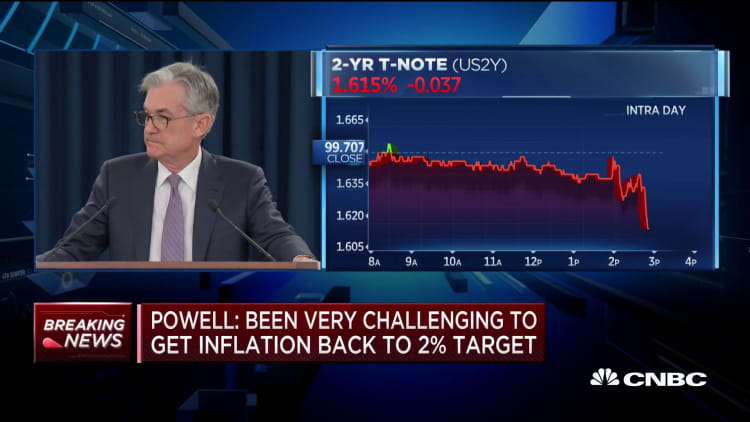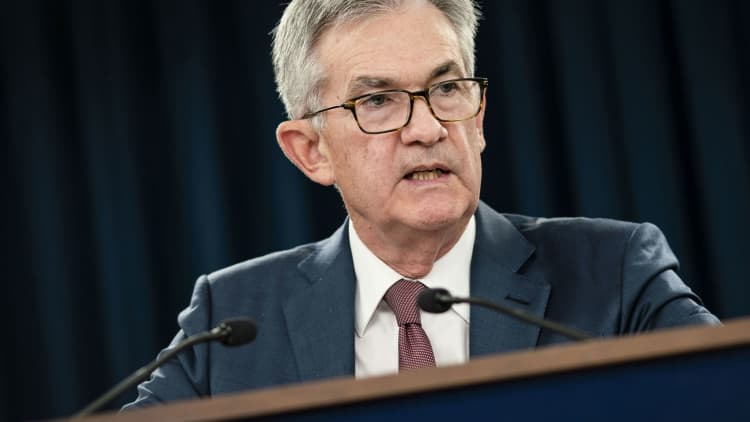
Federal Reserve Chairman Jerome Powell said Wednesday that he'd prefer to let inflation rise and hold above the central bank's target before considering future interest rate hikes.
"In order to move rates up, I would want to see inflation that's persistent and that's significant," Powell said at a news conference in Washington. "A significant move up in inflation that's also persistent before raising rates to address inflation concerns: That's my view."
Powell cautioned, however, that the Fed's reluctance to hike rates again isn't a strict, codified rule.
"We haven't tried to turn it into some sort of official forward guidance," he said. "It happens to be my view that that's what it would take to want to move interest rates up in order to deal with inflation."
Powell's comments came minutes after the Federal Open Market Committee decided to hold rates steady in its final policy decision of 2019. It said in its summary of economic projections that in 2020 the Fed sees 2% GDP growth, 3.5% unemployment and a 1.9% core PCE rate, the central bank's preferred inflation gauge.

A separate report on inflation from the Labor Department showed Wednesday that consumer prices rose slightly more than expected in November as fuel and housing costs pushed up how much everyday Americans spend. The government's headline consumer price index rose 0.3% in November from the prior month.
The Fed uses adjustments in interest rates to target inflation of 2% — as measured by the core PCE, not the consumer price index — to guarantee that U.S. growth is expanding at a healthy pace. But while it can try to guess how interest rates will affect inflation, it had to adjust its course earlier this year.
The central bank raised rates four times throughout 2018 as officials worried that a combination of stimulative fiscal policy in the form of tax cuts and a historically tight labor market could goose inflation beyond the 2% goal.
It later reversed course in 2019, cutting rates three times between July and October amid fears of a possibly infectious global growth slowdown and tamer-than-anticipated inflation.


